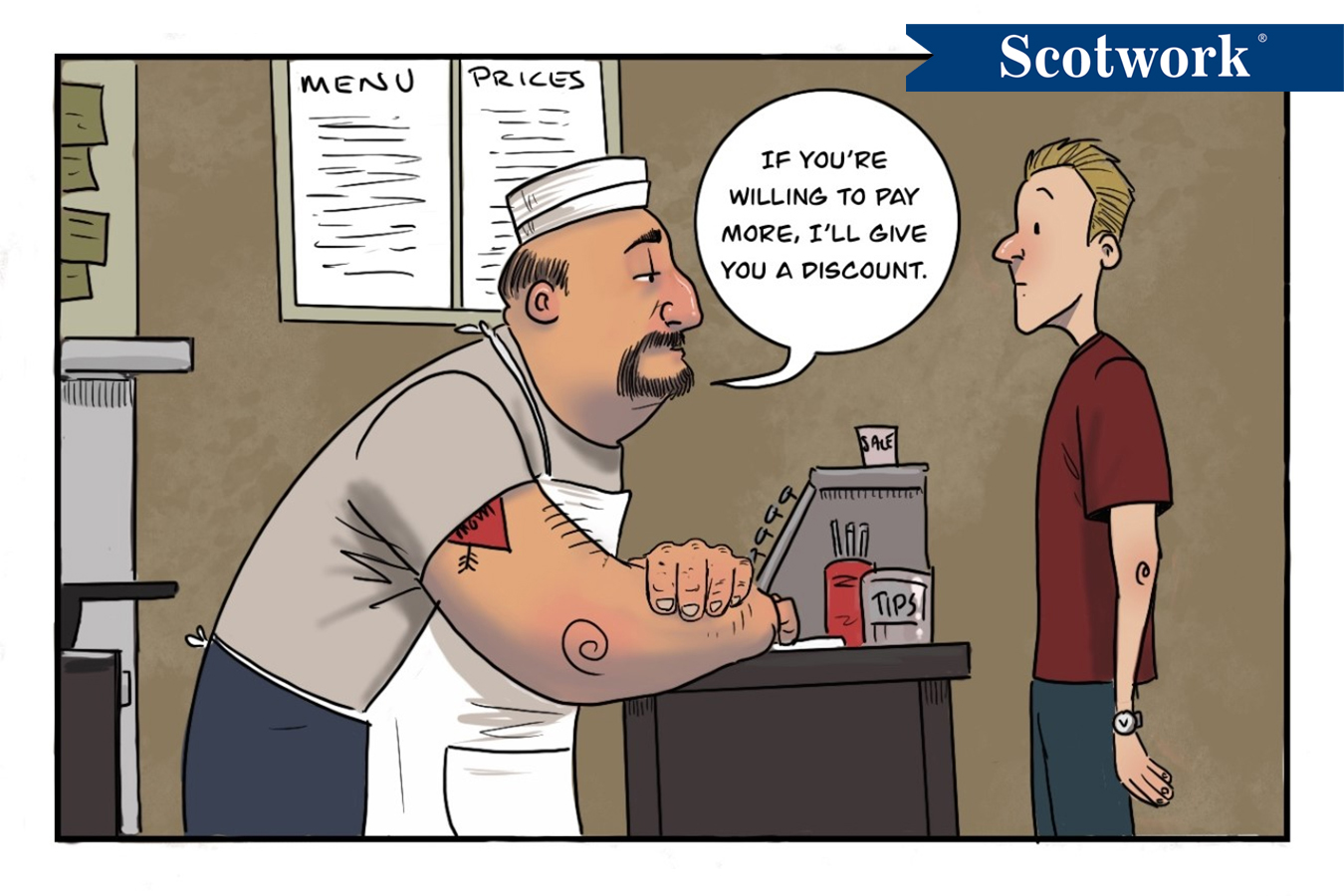How many times have you heard (or said), “Can I have a discount?” We hear it all the time, as do many members of the sales teams we work with. This is one of the most common questions buyers ask. In fact, if they aren’t asking for pricing considerations, they’re not doing their job. However, your answer doesn’t have to be “yes.” When you say “yes,” you’re giving in and setting a precedent that’s difficult to roll back. Instead, you may want to do what we do — not give a discount.
“Easy for you to say!” you might be thinking. Actually, it’s not an easy thing to say when you have nothing else to say. If your response is “no discounts” and nothing else, you’re setting yourself up for an argument. The buyer will inevitably see this as competitive, and the conversation will turn into a battle of wills until someone blinks. Unfortunately, the sellers usually blink. When that happens, they lose credibility, which makes it difficult for them to hold their ground in the future. In addition, they’ve unintentionally trained the buyers to ask for a discount again (and again), which makes future negotiations more tenuous than they need to be. But it doesn’t have to be that way.
Before someone sends me a note and tells me that their organization got a pricing concession from us, let me clarify what I mean by “we don’t give discounts.” As negotiators, we focus on trading value. When someone asks for something from us, we think about what we need in return in order to say “yes.” Therefore, if we were to discount our pricing without asking for something in return, we’d be going against everything we believe in as negotiators.
Discounts imply a reduction without a return, but that’s not always the case. Many of you have traded a discount for something in return, and that’s exactly what a skilled negotiator would do. However, words matter, and, unfortunately, not everyone is a skilled negotiator. Therefore, the word “discount” does not always imply a trade. That’s why we offer incentives.
An incentive implies a quid pro quo, and it’s universally understood that one side will have to do something in order to receive the offered incentive. Whenever someone asks for a discount, our simple response is, “We don’t offer discounts. However, we do offer incentives.” We offer incentives for a variety of points, such as volume, duration of the contract, and referrals. The incentive is based on the value of the trade.
This process sets a different precedent and expectation. First, we’re not being unreasonable and just saying “no,” only later to be badgered into a “yes.” So, it helps avoid competitive arguments. Secondly, we’re setting expectations upfront regarding what we need in order to provide a pricing concession. This gives both sides a path to follow in order for everyone to get what they want. Lastly, it supports our belief regarding how skilled negotiators create value for all parties involved.
If you’re already stuck in a discount practice and want to change it, you can — it just takes a little bit of time. Here are some tips for how to do it:
- Know what to trade. Before you can offer incentives, you need to understand what’s valuable to you. Think about all of the discounts you’ve offered and ask yourself, “What would have been good to get in return?” That will help you identify potential incentives.
- Pivot. For all new customers, stop discounting and move toward incentivizing. This will ensure that discounting is relegated to existing customers, not new ones.
- Set a timeline. Give existing customers a timeframe for when your discounts will end and the new incentives will begin. The more notice you can give, the easier it will be for the other side to adjust and adapt.
- Be flexible. You’ll run into customers who will have a hard time with this transition. Understand their issues and be flexible regarding your solution — your longtime customers will appreciate that.
- Be upfront and manage expectations. When negotiating with customers (particularly new ones), tell them early on about how they can get pricing incentives. This will help you get more productive conversations faster.
You certainly don’t have to change your practice if it’s working for you. Just keep in mind that whatever you give away today will become the expectation in the next negotiation.
We Can Help You Pivot From Discounting to Incentivizing.
Are you offering pricing discounts without getting anything in return? Have you considered pivoting from discounting to incentivizing, where the other side has to do something in order to receive the offered incentive? We can help! Drawing on nearly 50 years of real-world negotiating experience, we’ll assist you with getting better deals, saving time, and creating value for all involved — not to mention preserving and even strengthening relationships. Let us partner you with one of our advisers, ensuring that you’ve got the broadest view of your deal.

